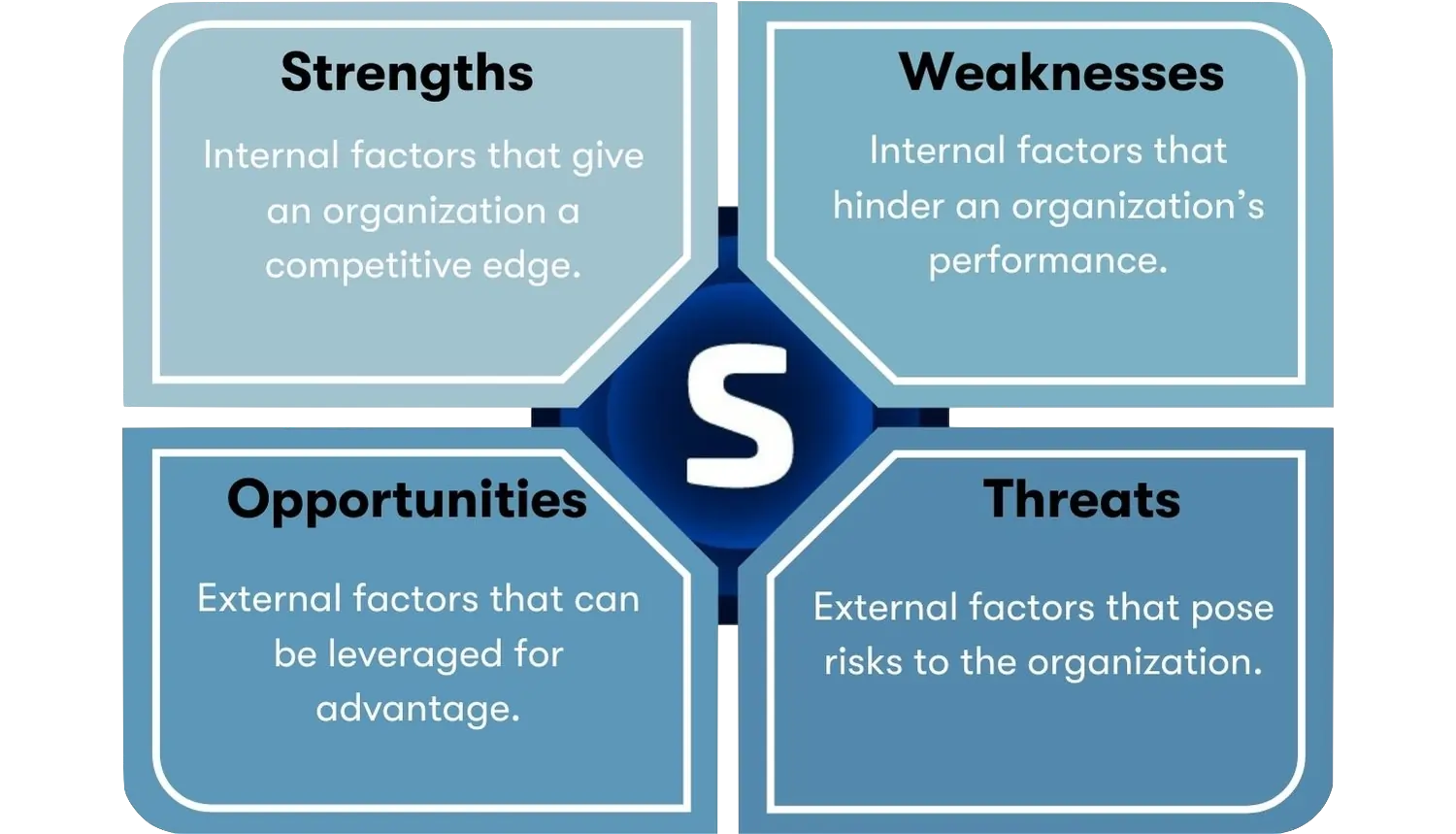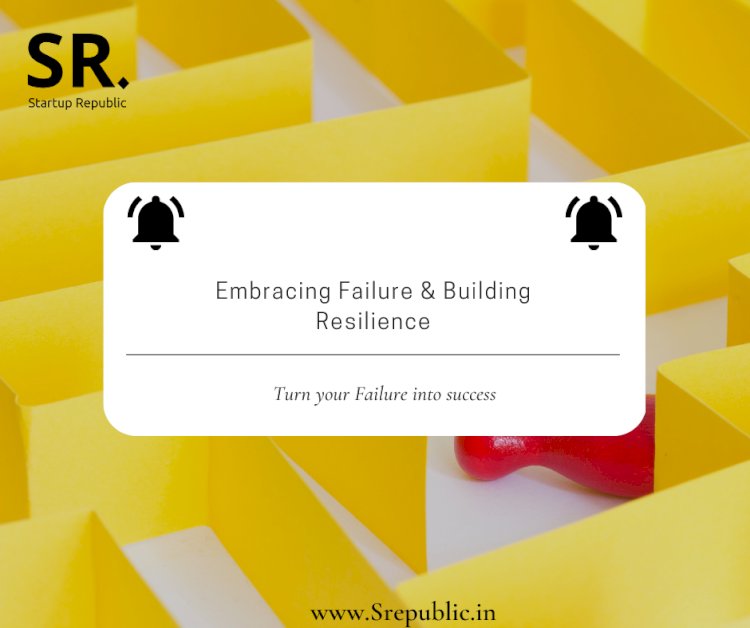
SWOT Analysis for Startups: Unlocking Growth by Identifying Your Strengths & Weaknesses
Starting a business is an exhilarating journey, filled with innovative ideas, ambitious goals, and often, a healthy dose of uncertainty. As a founder, you’re juggling countless tasks, from product development to marketing, fundraising, and team building. Amidst this whirlwind, it’s easy to lose sight of the bigger picture – where your startup truly stands and where it’s headed.
This is where a powerful, yet surprisingly simple, strategic planning tool comes into play: SWOT Analysis. For startups, understanding your internal strengths and weaknesses is not just a good idea; it’s a critical foundation for building a resilient, competitive, and ultimately successful business.
This comprehensive guide will demystify SWOT analysis, focusing specifically on how startups can leverage it to identify their unique strengths and honest weaknesses, paving the way for informed decision-making and sustainable growth.
Table of Contents:
- What Exactly is SWOT Analysis?
- Why is SWOT Analysis Crucial for Startups?
- Deep Dive: Identifying Your Strengths (Internal Factors)
- What are Strengths?
- How to Uncover Your Startup’s Strengths
- Examples of Startup Strengths
- Deep Dive: Uncovering Your Weaknesses (Internal Factors)
- What are Weaknesses?
- How to Honestly Assess Your Startup’s Weaknesses
- Examples of Startup Weaknesses
- A Glimpse at Opportunities & Threats (External Factors)
- How to Conduct a SWOT Analysis for Your Startup (Step-by-Step)
- Tips for an Effective SWOT Analysis
- Common Mistakes to Avoid
- Beyond the Analysis: What Next?
- Conclusion: Your Startup’s Strategic Compass
- Frequently Asked Questions (FAQs)
1. What Exactly is SWOT Analysis?
At its core, SWOT analysis is a strategic planning framework used to evaluate a business’s competitive position. It stands for:
- Strengths: What your startup does exceptionally well; internal positive attributes.
- Weaknesses: Areas where your startup is lacking or could improve; internal negative attributes.
- Opportunities: External factors that your startup could potentially exploit for growth; external positive conditions.
- Threats: External factors that could harm your startup; external negative conditions.
Think of it as a comprehensive snapshot of your business’s current health, both inside and out. For startups, it’s like a GPS, helping you understand your current location and chart the best course forward.
2. Why is SWOT Analysis Crucial for Startups?
Many startups skip formal strategic planning, believing they’re too nimble or busy. This is a mistake. A SWOT analysis, even a quick one, offers immense value:
- Clarity and Focus: It helps you cut through the noise and understand what truly matters to your business’s success.
- Informed Decision-Making: By knowing your strengths, you can leverage them. By understanding your weaknesses, you can address them or mitigate their impact.
- Competitive Edge: Identifying what makes you unique (strengths) and where your competitors might have an advantage (which could be your weakness) helps you strategize more effectively.
- Resource Allocation: Knowing your weak spots can guide where you invest time, money, and effort to improve.
- Risk Mitigation: Understanding potential threats and your internal weaknesses allows you to proactively develop contingency plans.
- Growth Opportunities: By aligning your strengths with market opportunities, you can identify viable paths for expansion.
- Better Business Plan: A well-executed SWOT analysis provides critical insights that strengthen your business plan and make it more appealing to investors.
In essence, a SWOT analysis transforms guesswork into strategic insight, empowering your startup to navigate challenges and seize opportunities with confidence.
3. Deep Dive: Identifying Your Strengths (Internal Factors)
Your strengths are the unique advantages your startup possesses. These are internal attributes, meaning they are within your control. They are what makes your business shine and gives you an edge over competitors.
What are Strengths?
Strengths are the positive characteristics of your business that give you an advantage. They could be anything that you do particularly well, or any resources you have that are beneficial.
How to Uncover Your Startup’s Strengths
Identifying strengths requires introspection and an honest look at what makes your startup valuable. Ask yourself and your team these questions:
- What do we do exceptionally well? Think about your processes, product, or service.
- What unique resources do we have? (e.g., patented technology, specialized team members, exclusive partnerships, strong brand reputation, significant funding).
- What advantages do we have over our competitors? (e.g., lower costs, superior quality, faster delivery, unique features).
- What do our customers love about us? (Gather feedback, look at testimonials, reviews).
- What is our Unique Selling Proposition (USP)? What makes us different and better?
- What valuable skills, knowledge, or experience does our team possess?
- What intellectual property do we own? (e.g., patents, trademarks, proprietary algorithms).
- What internal processes are highly efficient or effective?
Examples of Startup Strengths:
- Innovative Technology: A proprietary algorithm, a groundbreaking app, a unique manufacturing process.
- Strong Team: Experienced founders, highly skilled engineers, exceptional customer service representatives.
- Unique Product/Service: A niche offering with little competition, a disruptive business model.
- Cost Advantage: Ability to produce goods or services at a lower cost than competitors.
- Strong Brand Identity: A memorable name, compelling story, or strong early community.
- Customer Loyalty: A small but highly dedicated user base.
- Strategic Partnerships: Agreements with key suppliers, distributors, or complementary businesses.
- First-Mover Advantage: Being the first to market with a particular solution.
- Access to Capital: Secure seed funding or a strong network of potential investors.
- Efficient Operations: Streamlined processes that reduce waste and increase productivity.
Pro Tip: Be specific. Instead of "good team," say "team with 20+ years of combined experience in AI development."
4. Deep Dive: Uncovering Your Weaknesses (Internal Factors)
Weaknesses are the areas where your startup is lacking or could perform better. Like strengths, these are internal factors, meaning they are within your control and can be improved or mitigated. Facing your weaknesses head-on is crucial for growth.
What are Weaknesses?
Weaknesses are the negative attributes of your business that detract from your ability to achieve your goals. They are areas where you are at a disadvantage compared to your competitors, or where you simply need to improve.
How to Honestly Assess Your Startup’s Weaknesses
This is often the hardest part of the SWOT analysis because it requires brutal honesty and humility. No startup is perfect. Ignoring weaknesses is like ignoring a leak in your boat – it will eventually sink you.
Ask yourself and your team these tough questions:
- What do we currently do poorly or inefficiently?
- What resources do we lack? (e.g., funding, skilled personnel, equipment, time).
- Where do our competitors perform better than us?
- What internal processes are inefficient or cumbersome?
- What are common complaints from our customers or users?
- What aspects of our product/service are underdeveloped or buggy?
- Do we have any knowledge or skill gaps within our team?
- Are there any areas where we are over-reliant on a single person or resource?
- What operational challenges do we consistently face?
- Is our brand recognition low or confusing?
Examples of Startup Weaknesses:
- Limited Budget/Funding: Insufficient capital for marketing, hiring, or expansion.
- Small Team/Lack of Expertise: Not enough people, or gaps in critical skills (e.g., marketing, sales, specific tech).
- Lack of Brand Recognition: Unknown in the market, making customer acquisition harder.
- Immature Product/Service: Missing key features, unstable performance, poor user experience.
- High Operating Costs: Inefficient processes leading to higher expenses than competitors.
- Reliance on a Single Founder/Key Person: If that person leaves, the business is at risk.
- Poor Customer Support: Slow response times, unresolved issues, unhappy customers.
- Limited Distribution Channels: Difficulty reaching target customers effectively.
- No Patents/Proprietary Tech: Easy for competitors to copy your ideas.
- Weak Online Presence: Outdated website, minimal social media activity.
Pro Tip: Frame weaknesses as "areas for improvement" rather than fatal flaws. Every weakness is an opportunity to learn and grow.
5. A Glimpse at Opportunities & Threats (External Factors)
While the core focus of this article is on internal Strengths and Weaknesses, it’s important to briefly touch upon the external factors – Opportunities and Threats – to understand the full scope of a SWOT analysis. These factors are outside your startup’s direct control but significantly impact your business environment.
- Opportunities: Favorable external conditions that your startup could leverage for growth.
- Examples: Emerging market trends, new technologies, shifts in consumer behavior, competitor failures, new regulations that favor your business.
- Threats: Unfavorable external conditions that could harm your startup.
- Examples: New strong competitors, economic downturns, changing government regulations, supply chain disruptions, negative media coverage, rapid technological obsolescence.
By understanding all four quadrants, you get a complete picture that allows you to match your internal strengths with external opportunities, and develop strategies to mitigate internal weaknesses against external threats.
6. How to Conduct a SWOT Analysis for Your Startup (Step-by-Step)
Ready to perform your own SWOT analysis? Here’s a simple, actionable guide:
Step 1: Gather Your Team (or a Diverse Set of Perspectives)
- While a solo founder can do this, the best SWOT analyses involve multiple viewpoints. Include co-founders, key employees, even trusted advisors or mentors. Diverse perspectives lead to more comprehensive insights.
Step 2: Create Your SWOT Matrix
- Draw a simple 2×2 grid, or use a whiteboard/digital tool. Label each quadrant: Strengths, Weaknesses, Opportunities, Threats.
Step 3: Brainstorm for Each Quadrant (Separately)
- Start with Strengths: Ask the questions outlined in Section 3. Be thorough. Write down everything that comes to mind, no matter how small.
- Move to Weaknesses: Be brutally honest. What’s holding you back? What do you need to improve?
- Address Opportunities: What external factors could help you? Think about market trends, technological advancements, or changes in consumer behavior.
- Finally, List Threats: What external challenges could hurt your business? Consider competitors, economic shifts, or regulatory changes.
- Important: Keep internal (S&W) separate from external (O&T). This is a common mistake.
Step 4: Prioritize and Refine
- Once you have a long list for each quadrant, review them.
- Filter: Remove duplicates or very vague points.
- Prioritize: Identify the top 3-5 most significant points in each category. Not all strengths are equally impactful, nor are all weaknesses equally critical.
Step 5: Develop Strategies (The Action Phase!)
- This is where the real value comes in. Don’t just list; strategize!
- SO (Strengths-Opportunities) Strategies: How can you use your strengths to take advantage of opportunities? (e.g., Strength: Innovative tech + Opportunity: Growing demand for automation = Develop new automation features.)
- WO (Weaknesses-Opportunities) Strategies: How can you overcome weaknesses to take advantage of opportunities? (e.g., Weakness: Limited marketing budget + Opportunity: Rise of viral content = Focus on low-cost, high-impact content marketing.)
- ST (Strengths-Threats) Strategies: How can you use your strengths to minimize threats? (e.g., Strength: Strong customer loyalty + Threat: New competitor = Emphasize customer service and community engagement to retain users.)
- WT (Weaknesses-Threats) Strategies: How can you minimize weaknesses and avoid threats? (e.g., Weakness: Over-reliance on one supplier + Threat: Supply chain disruption = Diversify supplier base.)
Step 6: Integrate and Review Regularly
- Your SWOT analysis shouldn’t be a one-off exercise. Integrate it into your ongoing strategic planning. Revisit it every 6-12 months, or whenever there’s a significant change in your market or business.
7. Tips for an Effective SWOT Analysis
- Be Honest and Objective: This is the most critical tip. Self-deception will lead to flawed strategies.
- Involve Diverse Perspectives: The more varied the viewpoints, the more comprehensive and accurate your analysis will be. Don’t just include people who agree with you.
- Be Specific and Factual: Avoid vague statements. Instead of "good product," specify "product has industry-leading load times."
- Focus on Actionability: Each point in your SWOT should ideally lead to a potential action or strategic consideration.
- Keep it Concise: While brainstorming can be expansive, the final prioritized list should be manageable.
- Don’t Confuse Internal with External: This is a common pitfall. Your team’s skill is a strength (internal). A market trend is an opportunity (external).
- Make it a Living Document: Your business and market are constantly evolving. Your SWOT should too.
8. Common Mistakes to Avoid
- Being Overly Positive or Negative: Balance is key. Don’t inflate your strengths or dwell excessively on weaknesses.
- Confusing Weaknesses with Threats (or Strengths with Opportunities): This is the most common mistake.
- Weakness: Limited marketing budget (internal). Threat: A competitor launching a massive ad campaign (external).
- Strength: Highly skilled development team (internal). Opportunity: Growing demand for your tech (external).
- Being Too General: "We need more sales" is a vague weakness. "Our sales conversion rate is 2% below the industry average due to lack of trained sales staff" is specific and actionable.
- Doing it Once and Forgetting It: A SWOT analysis is a tool, not a destination. It needs to inform your strategy and be revisited.
- Not Taking Action: The analysis itself is useless if it doesn’t lead to concrete steps and adjustments in your business plan.
9. Beyond the Analysis: What Next?
Once you’ve identified your strengths, weaknesses, opportunities, and threats, the real work begins: turning insights into action.
- Prioritize Action Items: You can’t fix everything at once. Focus on the most impactful strategies first.
- Assign Ownership: Who is responsible for addressing each weakness or capitalizing on each opportunity?
- Set Measurable Goals: How will you know if your strategies are working? (e.g., "Increase sales conversion rate by 1% in Q3").
- Integrate into Your Business Plan: Your SWOT findings should directly influence your marketing plan, financial projections, operational strategies, and hiring plans.
- Monitor and Adjust: Regularly track your progress and be prepared to pivot your strategies based on new information or changing market conditions.
10. Conclusion: Your Startup’s Strategic Compass
For any startup, navigating the unpredictable waters of the business world requires more than just a great idea; it demands clarity, adaptability, and strategic foresight. A SWOT analysis, particularly its focus on identifying internal strengths and weaknesses, provides precisely this.
By honestly assessing what you do well and where you need to improve, your startup gains a powerful strategic compass. It empowers you to leverage your unique advantages, tackle your limitations head-on, and ultimately, build a more robust, competitive, and successful business. Don’t just dream of success; analyze, strategize, and execute!
11. Frequently Asked Questions (FAQs)
Q1: How often should a startup conduct a SWOT analysis?
A1: For startups, it’s recommended to do a comprehensive SWOT at least once a year, and a quick review every quarter. You should also conduct one whenever there’s a significant change in your business environment (e.g., new competitor, major market shift, pivot in strategy).
Q2: Who should be involved in a startup’s SWOT analysis?
A2: Ideally, all key stakeholders should be involved: founders, co-founders, department heads (if any), and even key employees. For very early-stage startups, trusted mentors or advisors can also provide valuable external perspectives.
Q3: Can a solo founder do a SWOT analysis alone?
A3: Yes, absolutely! While multiple perspectives are beneficial, a solo founder can still gain immense value. Be extra diligent in being honest with yourself, and consider seeking feedback from a mentor or a trusted peer to challenge your assumptions.
Q4: Is SWOT analysis only for new businesses?
A4: Not at all! While incredibly valuable for startups establishing their foundation, SWOT analysis is a continuous strategic tool used by businesses of all sizes and stages, from small businesses to Fortune 500 companies.
Q5: What’s the key difference between a weakness and a threat?
A5: This is crucial:
- Weakness (Internal): Something within your business that you can control or improve. (e.g., "Our website is outdated.")
- Threat (External): Something outside your business that you cannot control, but must respond to. (e.g., "A new, well-funded competitor entered the market.")
The distinction lies in control: you can fix a weakness, but you can only react to a threat.



Post Comment